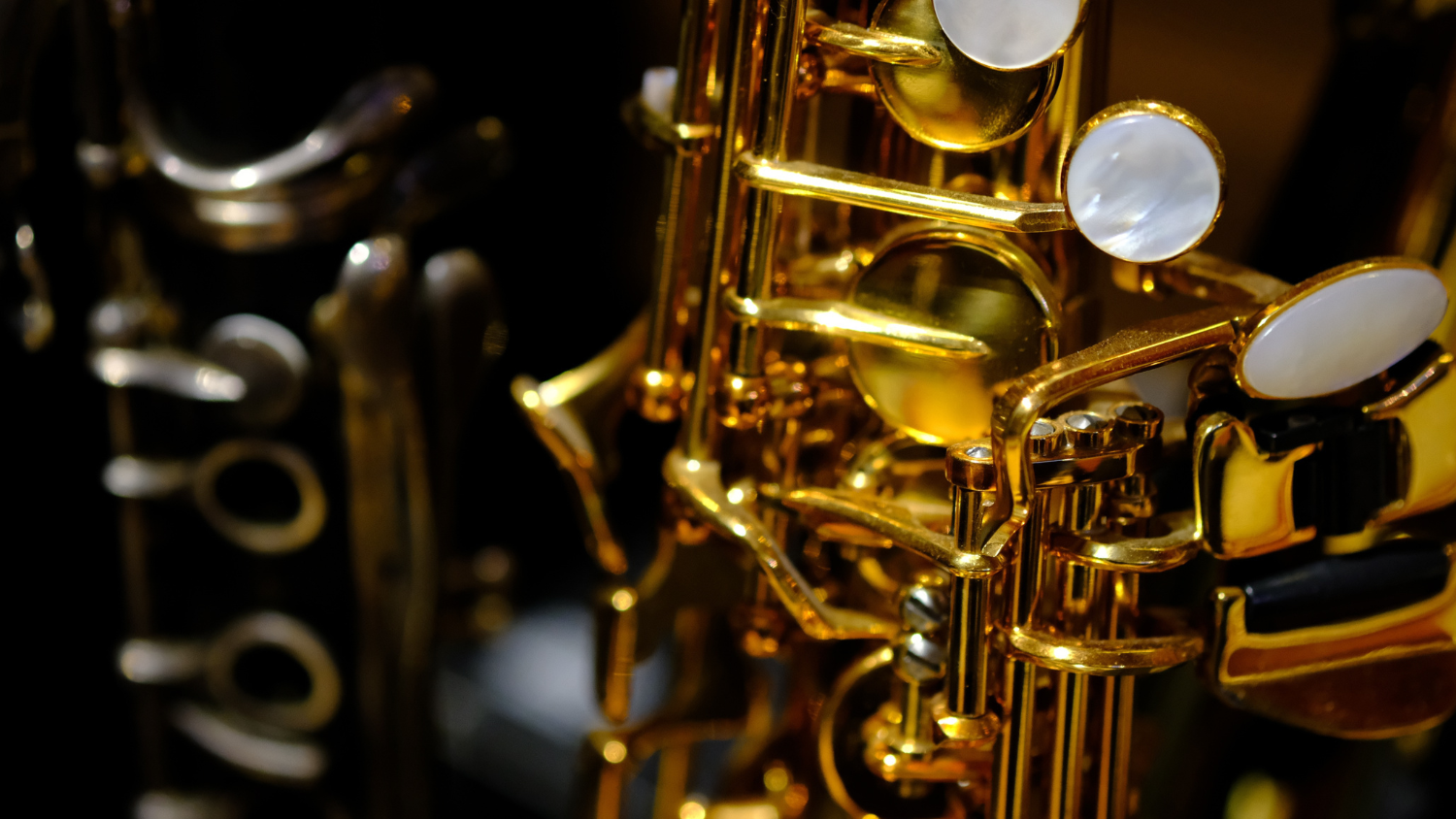Being versatile is practical
Today’s saxophonists should be able to play with a variety of sounds in a wide range of styles, from jazz to classical music. Being versatile is practical: saxophonists who play both jazz and classical music are qualified for a wider range of playing and teaching jobs than those who specialize in only one style. Also, the musical rewards for the versatile saxophonist are great. I have been lucky enough to play jazz with combos, swinging big band charts, orchestral solos, concertos with symphonies, chamber music, recitals, high-powered fusion and salsa.
Unfortunately, one of the biggest obstacles to those pursuing this versatility is the attitude of many teachers. One of my teachers, a great classical saxophonist, once described one of the superstars of jazz as: “…a very creative musician, but one who doesn’t play the saxophone very well.” Years later, I attended a clinic given by a famous jazz saxophonist who complained: “Those classical guys, with their pinched sounds, are ruining the younger generation of saxophonists by teaching the wrong approach and embouchure.” Both of these viewpoints stem from ignorance—using the standards of one style to judge the performers of the other.
Actually, to me, there are more differences than similarities between the two styles. Jazz players generally work for a big, rich sound, often with edge. On the other hand, classical saxophonists strive for a smaller, rich, centered sound, dark and covered, with less edge. Dynamics are also interpreted differently: fortissimo for a classical saxophonist is about mezzo-forte or mezzo-piano for a jazz saxophonist, and a pianissimo in classical music is much softer than a pianissimo in jazz. Classical musicians tend to tune lower than jazz musicians do, and jazz saxophonists often play pitches (blue notes, etc.) which would simply be unacceptable in a classical performance.
The only way to become familiar with these differing characteristics is to listen analytically and often. Aspiring saxophonists should make every attempt to go to concerts featuring saxophones and they should listen to recordings of great artists from Coleman Hawkins, Johnny Hodges, Charlie Parker, Sonny Rollins and John Coltrane, to Marcel Mule, Sigurd Rascher, Frederick Hemke, Eugene Rousseau and Harvey Pittel. Listening should not be limited to saxophonists of course, and ideally, this listening should be coupled with private saxophone instruction.
The proper playing equipment is essential
The proper playing equipment is essential. Too often, I run across a student who tries to play classical music with a metal Berg Larsen mouthpiece, or a saxophonist who tries to play lead alto in a big band with a Selmer C*. Good jazz mouthpieces are designed for power, projection and some edge. There is little difference between mouthpieces made from metal and hard rubber, except that metal mouthpieces generally sound brighter and are more expensive. Good classical mouthpieces deliver a darker, more covered sound with less edge. They are often easier to play softly than jazz mouthpieces and they are almost always made of hard rubber.
While there are many embouchures used successfully by saxophonists, I use the following, with some variations for both styles: my top teeth rest on the mouthpiece, my corners are forward (I do not smile.), my lower lip is over my bottom teeth and my chin is pulled down, flat. My chin is pointed to pull my teeth away from the mouthpiece, so that my reed will be supported by my lower lip. To bite is incorrect.
This basic embouchure has found favor with numerous jazz and classical saxophonists, and I use it to play everything from chamber music to rock. To change styles, I need only make some slight adjustments to this basic embouchure, change my mouthpiece, reed and—most importantly—my musical conception (sound, pitch, vibrato, etc.) and I am ready to play.
To help with necessary adjustments to my sound, I make the following modifications to my basic embouchure. For jazz, I play with an open embouchure, my jaw is forward slightly and a small amount of lip rests on the reed. This combination allows the reed to vibrate unencumbered, producing a bright, free-blowing sound with a dark core. For classical music my embouchure is firmer, my jaw is in its natural position and I put more lip on the reed, producing a more compact, dark and covered sound.
I use differing techniques to adjust intonation in the two styles
I use differing techniques to adjust intonation in the two styles. I tend to tune a bit higher when playing jazz because, as I said earlier, jazz musicians tend to hear the pitch higher than classical musicians. Also, jazz saxophonists are among the softest instruments in many jazz groups, competing with brass, drums and amplified rhythm section instruments. Saxophonists compensate by playing louder to balance, and this tends to drive their pitch down. So, I tune a little higher to prevent myself from going flat when playing loudly. I generally adjust any sharp notes by loosening my embouchure a little.
In classical music, this situation is reversed. I tune lower because many classical musicians prefer the pitch on the low side. Also, saxophonists are often the loudest instruments in classical groups, dominating the strings, double reeds and other woodwinds. As saxophonists play softer to compensate, their pitch tends to rise. So, I tune a little lower to prevent myself from going sharp when playing softly. Any flat notes are adjusted by firming up slightly, which darkens the sound a bit. Sharp notes, particularly in the upper register, are adjusted by revoicing the vocal cavity (from “ah” to “oh“) and using false fingerings (closing some additional keys). It is less successful to adjust sharp pitches in classical music by loosening the embouchure (as is done in jazz), since this loosening would result in a sound that would be too open and bright for classical music.
I also use vibrato differently in classical music and jazz
I also use vibrato differently in classical music and jazz. In classical music, vibrato is generally used to add intensity, passion and emotionalism. Typically, classical saxophone vibrato is regular and it is faster and more narrow than jazz vibrato. Many classical saxophonists use vibrato virtually all the time, much like the vibrato used by violinists and cellists.
In jazz, however, it is the straight tone that is used for intensity. Vibrato usually relaxes the sound, and so, the most common use of vibrato in jazz—the bebop style—is on the ends of long notes, starting slowly, then gradually increasing in speed. Some contemporary jazz and fusion players use a more regular vibrato than the bebop variety described above, but they use it only on long notes and their vibrato is rather slow and wide. This regular vibrato adds a relaxed, “soulful,” expressive quality to the sound.
Vibrato is produced in a similar way for classical music and jazz—with jaw motion. To develop a quality vibrato, saxophonists must first be able to play with a clean, straight sound. After the achievement of a clean sound, students should practice adding vibrato of differing speeds and widths by moving their jaws slightly in a regular motion (it is helpful to think of the syllables “ya ya ya” or “yo yo yo“).
There is a clear path for those saxophonists seeking to learn both classical music and jazz. They must listen to and carefully study the kind of music that they wish to master. They must use appropriate mouthpieces and develop embouchures suitable for each style. The best advice, though, is to practice and practice until you get tired of everyone telling you how good you sound.






